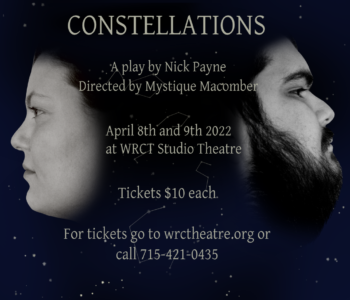
In mourning for Notre Dame; Carmo shows possibility
I put on my black dress and fastened my Eiffel Tower necklace, in mourning for Notre Dame.
Since I’ve been in Portugal, I have been visiting at least one museum a week. I had planned to go to an event downtown, and I try to coordinate trips to do more than one thing — such as visit a museum.
The museum I wanted to visit is closed on Tuesdays, so I looked at other museums on my list.
Carmo Church & Convent ruins stood out.
Not because it’s a highly rated museum, but because it’s a church that survived — in a way. The devastating earthquake of 1755 and resulting fire gutted the church and much of the city of Lisbon. Later attempts to rebuild Carmo were abandoned. It is now home to an odd assortment of antiquities, some housed in what used to be the main altar.
Most stunning, its arches and columns under a roofless sky.
That day, I felt like I needed to visit Carmo, after the fire at Notre Dame.
I think of Paris every day
I still think of Paris every day.
It was my first trip abroad. My first love. I didn’t get there, though, until 2005.
In high school, I took French. So began my love affair with France in general and Paris in particular.
One of my few regrets is not going on one of the foreign language trips when I was in high school. I thought it was too expensive, and that we couldn’t afford it. Even then, I was practical.
By the time 2005 came along, I had buried any thought of getting there, so deeply I had to be reminded of it.
My husband at the time encouraged me to go. Despite it being a fabulous deal (less than $500 for airfare and hotel), I hesitated. I didn’t need to go. It wasn’t important.
“But you always dreamed of going to Paris,” he said.
I did?
Suddenly, it came back. The desire. Regret. Longing. Dreaming.

Dream trip to Paris
I went to Paris. It was everything I hoped for and more. But it wasn’t enough. It whetted my appetite not to travel but to live other places.
I will go back, I told anyone who asked, when I can stay for six months.
Interesting, eh?
In the ensuing years, Paris was always top of mind. I even painted murals in my breezeway to look like a Parisian street by the Seine. During the time I lived there, I visited “my Paris” every day, even if it was just to go to work or do the laundry.
I haven’t been back to Paris, but I will. Now I know a three-month visit will suffice.

In mourning for Notre Dame
The devastation at Notre Dame reminds me that nothing lasts forever.
If it’s rebuilt, it won’t be in my lifetime. Such an undertaking will be decades in the making.
No, when I see it again, it is more likely to remind me of Carmo, the cathedral without a roof. Not abandoned nor forgotten, but forever altered by a fateful event.
I mourn the loss of Notre Dame, what it was and what it meant to a city — to the world.
That’s why I wore back to visit another cathedral museum. And my Paris necklace.
Be a Better Writer Tip
Having topics readily available when you sit down to write can save time and help you stay focused. Planning those topics is a good idea for whatever kind of writing you do.
- Set aside some time at least monthly to develop topic ideas for your writing. Actually schedule the time. Put it on your calendar. Start with an hour. After you do it a time or two, you’ll know how much time you need. If you’re developing a lot of topics, you may need more, but an hour is a good place to start.
- Determine how many topics you need. How often do you publish work? In my case, I try to publish a new column twice a week. So for a month, I might need eight to 10 columns. Your timeline might be different. If you goal is to write a chapter a week, you’ll only need four or five topics. If your goal is to write a poem a day, you’ll need about 30 topics.
- Grab paper and pen, your laptop or phone to be able to capture your ideas. You might want to number your paper so you know how many you need. You need to write them down, or they won’t do you any good later.
- Write down ideas as they come to you. You can develop more topics than you need. You can always keep it for another month or two.
- Take the ones that remain and put them on your calendar, into a spreadsheet or simply write a date next to it. Make it easy for you to do. Don’t take too much time on it. The goal isn’t for this to be a big project, but to generate ideas so when you write, you know what you’re writing about.
- The next time you need to write, refer to your list for the topic for that date.
Try brainstorming
- If you struggle to get started, try brainstorming ideas – write down everything you think of without considering if it’s a good idea. Set a timer, if necessary. Maybe try 15 minutes to start. That way you only spend a certain amount of time on it.
- When the time is up, take your list and consider the merits. Is it a good topic as is? Does it need more work? Is it too big and does it need to be simplified or broken into multiple steps? Is it something you think you should write about, but you really aren’t inspired?
- Cross off the ones you don’t want to do. Proceed with putting the ones that remain on your calendar as outlined above.
If you don’t have enough topics, that’s OK. Maybe you’re writing goal is ambitious. You can always set another time to do more planning.
You may find that you need more time to flesh out your topics during the planning phase. If so, build it in.
Once you’ve started this, you might find you need to tweak it. That’s OK. Maybe you need more time or less time. Maybe you want to plan more often or less often. It’s possible you’ll find topics come more easily to you, and you don’t need to plan as rigorously. Or, it could be you find it nice to not have to think about topics except once a month, taking the stress off.
Planning your writing, can give you freedom when it comes time to write. Give it a try!



